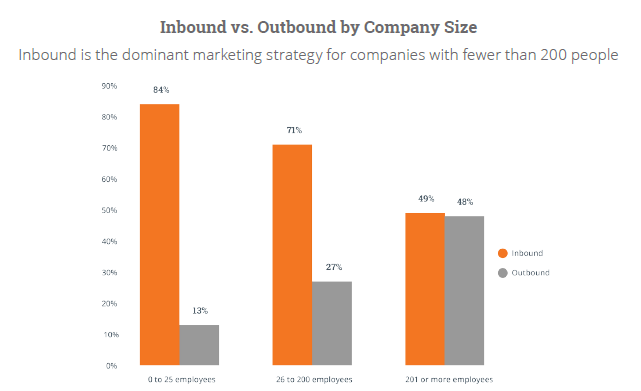6 Key Takeaways: HubSpot's Annual 'State of Inbound' Report
As you may know, HubSpot recently published their 7th annual State of Inbound report. They surveyed 3957 sales and marketing professionals from 150 countries and compiled their responses into meaningful, digestible, intuitive data narratives and graphics. Lucky us.

Though the report is chock-full of useful information (get it for yourself here), I've summarized the takeaways that (figuratively) punched me in the face. (All data and images below taken directly from the State of Inbound.) Here they are:
1. Bigger companies still use as much outbound as inbound marketing. (Some of us call this combination "Omnibound™" marketing.) In fact, companies with 200 or more employees use outbound about 4 times more than companies with 25 or fewer employees. 
2. In the B2B world, top marketing priorities are (in order):
In the B2C world, nearly 50% of marketers also want to increase revenue derived from existing customers. Question - why isn't this a priority in the B2B world? Shouldn't it be?
3. Marketers who check their metrics three times a week or more are 20% more likely to be successful - and to see an increase in ROI.
4. The "best in class" marketers are using marketing automation software at a higher rate than their mediocre counterparts. "Best in class" is defined here as marketers who saw an ROI increase over the past year.
5. Unsuccessful, meaning stagnant or decreasing-in-size, sales teams are more than twice as likely as their successful (i.e., growing) counterparts to use informal data management and storage. Think Excel, Outlook or paper files. Yikes.

6. Sales teams say their biggest CRM challenges are (in order) manual data entry, lack of integration, difficulty in tracking sales funnel, poor levels of adoption and bad data.
So, what does all of this mean? It means that inbound rocks, inbound and outbound are both still in use (Omnibound!) and some people are still keeping their sales data in filing cabinets. Don't keep your sales data in filing cabinets. Also - why aren't B2B professionals prioritizing increasing revenue coming from existing customers? If your best client buys 100 widgets per week, who's to say they won't buy 150 per week next year?
Did you read the report? Let us know what takeaways punched you in the face. Have questions? Contact us anytime or leave a comment.
Comments